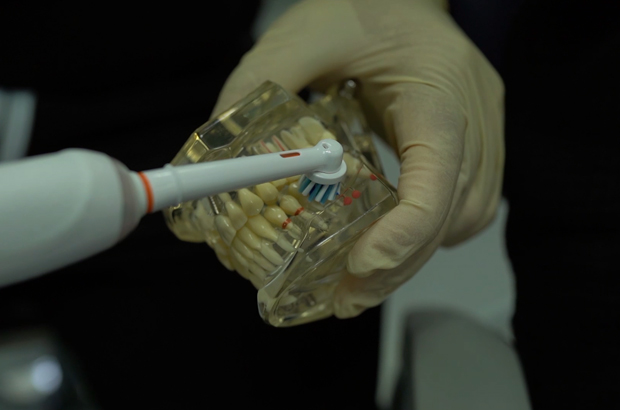















Gum disease (also known as periodontal disease, periodontitis) is an infection of the underlying supporting structures of the teeth.
Periodontal diseases are gum and bone infections caused by the bacteria (germs) in your mouth. These infections destroy the foundation, the gum and bone around your teeth. Periodontal diseases are painless until it is almost too late to save teeth.
If left untreated, periodontal disease can cause bad breath and swollen bleeding gums and eventually tooth loss. In fact, periodontal diseases are a major cause of tooth loss in adults.
Before we launch into the science of gum disease, it’s important to know that, despite it being one of the most wide-spread diseases across the world, it is preventable and can be easily treated when it is found early enough.

Periodontal disease is caused by bacteria that collects as a sticky, colourless film at the gum line as dental plaque. The plaque needs to be removed by brushing and cleaning between the teeth twice a day.
If plaque is not removed on a daily basis it can build up on the tooth surface and turn into a hard substance called calculus. Calculus, also known as tartar, is calcified dental plaque and is considered a contributing factor in causing periodontal diseases. When plaque and calculus are not removed the bacteria in plaque produce toxins (or poisons) that can destroy the supporting tissues and bone around the teeth.
Your own immune system attacks not only these invading bacteria but also the body’s own tissues, carving deep pockets between the teeth and gums. As the diseases progress, these pockets deepen, more gum tissue and bone are destroyed and the teeth eventually become loose. If periodontal diseases are not treated, the teeth may eventually need to be removed.
Periodontal disease affects the gums, bone and other supporting tissues of the teeth. Although most individuals suffer gum inflammation from time to time, around 10% of the population appear to suffer from the more severe forms of the disease which cause loss of supporting bone. Our knowledge is improving all the time of why this is, although 3 major factors are thought to be responsible. Family history, stress and smoking are all important risk factors. Stopping smoking is an important part of reducing the risk of developing the disease. Certain general diseases such as diabetes may also make an individual more susceptible.
The signs and symptoms of periodontal disease vary significantly but may include gums that bleed when brushing, together with signs of more advanced disease such as movement or drifting of the teeth. However, it is possible to have the disease and not be aware of these signs. It is essential to see your dentist regularly so that special assessment techniques, sometimes including x-rays, can be carried out as part of your routine dental examinations.
Here are some ‘red flags’ or symptoms you may notice that should raise concerns:
There are a few factors that put people at higher risk of getting severe gum disease.

Refer patients for:
Teddington Dental
Sheen Dental
Sunningdale Dental Practice
@Teddington 020 8977 2911
@Sheen 020 8876 5277
@Sunningdale 01344 620526